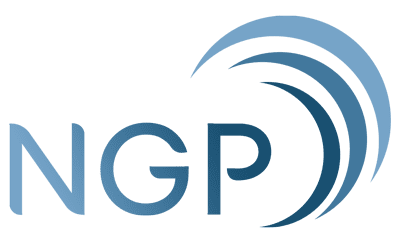SEO (Search Engine Optimization) and SEM (Search Engine Marketing) are integral to a successful marketing campaign. Even small startups can effectively carve a place for themselves in a competitive market against long-established brands as long as they have a solid strategy in place.
Both SEO and SEM utilize complex search optimization techniques in order to drive traffic, convert site visits into sales, and create exposure. They can be so similar, in fact, that many use these terms interchangeably.
However, they are two very different digital marketing strategies. Whichever you use will depend on what keywords you want to rank for, how much you’re willing to spend on a campaign, and how quickly you want to see results.
There is no one-size-fits-all answer as to which of the two is better for any particular business. Although it’s common to pit one against the other, more often than not, the best way to go is to incorporate both to design a robust marketing campaign that yields both quick and long-term results.
The Difference Between SEO and SEM
First things first: It’s crucial to have a clear understanding of what SEO and SEM actually are in order to determine whether a business needs either SEO or SEM–or both.
There is a lot of confusion about these terminologies, especially because they overlap in many ways. For one, they both capitalize on search engine results in order to improve a website’s exposure and traffic.
But the ways through which such ends are achieved vary a great deal between SEO and SEM.
What is SEO?
SEO is the process of optimizing a website’s content for search engines. Other search engines like Bing and Yahoo are taken into consideration, but the focus of these efforts is Google, which has the lion’s share of the global search market, at 85% worldwide.
SEO drives website traffic through organic searches or unpaid methods.
This can be done through:
- Keyword research and utilization. Using keyword research tools, you can determine what people search for. These search queries can be incorporated into content to drive traffic to a specific website.
- Backlinking to authority sites. Backlinking is an important aspect of SEO. It “tells” a search engine that a website is, by affiliation to credible sites through links, trustworthy and should rank higher in search results.
- Matching the search intent. The way a page’s content is written matters if you want to match a specific search intent. For example, if a search intent is to learn about a specific topic, the content may be an informational blog or how-to. But if the intent is to find the best product to buy, product reviews or product comparisons are a better match.
- Applying technical SEO techniques. This means search engines should be able to locate, crawl or grab content from, index, and understand your website in order for it to rank.
What is SEM?
SEM or Search Engine Marketing is a strategy that involves paid methods to generate exposure for a website. These methods include ads, pay-per-click advertising (PPC), and paid search.
While SEO is optimizing website content to match what search engines will rank higher–at no monetary cost to you, SEM technically means buying site traffic. Therefore, each click, ad, or search means an expense.
But the results are almost instantaneous.
The keywords you use will be targeted and audience-specific, and ads will be placed strategically to guarantee conversion of visits to sales.
According to a study, 61% of searches result in actual sales, making SEM a highly effective strategy for new brands looking to get a foot in the door.
When to Use SEM or SEO
So if both SEO and SEM are targeted towards the same thing–driving traffic and generating exposure–which should you use?
The best strategy uses both.
Why?
SEM Will Give You a Headstart, But SEO Will Keep You Going
A startup will benefit from the instant results of SEM, but it’s very costly to maintain the same success using SEM alone. SEO offers long-term results once a solid strategy is in place.
Also, capitalizing on the benefits of both SEO and SEM will help you create a marketing strategy that adapts to changing search trends and online activities.
For instance, the targeted keywords that you gain instant success with using paid marketing can help you create long-term SEO strategies to maintain and further boost traffic.
Done right, your pages could generate traffic and income even if you leave them alone and don’t spend anything on PPC or keyword bidding.
Using Both Will Help You Rank for Different Types of Keywords
Not all keywords are alike. Using both SEO and SEM will ensure that you rank for various types of keywords, such as:
- Informational keywords. These are keywords used by people whose intention is to learn about a topic. Here belongs your typical “how to” keywords (among others) and are best dealt with using long-term SEO strategies.
- Highly generic keywords. Keywords such as “running shoes” are very hard to rank for because they’re just too generic. They’re also tough to work with when other brands have established themselves in the top searches and your website is practically (yet) unknown. These are best tackled using SEM.
- Ad-heavy keywords. Using a combination of SEO and SEM strategies is the best way to tackle ad-heavy keywords, depending on how high their KD (keyword difficulty) rating is. The more backlinks you need to rank for a keyword, the higher the KD, which also means you’ll benefit more from using SEM. In contrast, ad-heavy keywords with a low KD are best dealt with using SEO.
Best Practices for SEM and SEO
A cohesive strategy that uses both SEM and SEO may be your best shot at boosting website traffic. But you can have the benefits of both and still fail. It takes careful planning, a deep understanding of your audience, and targeting the right goals to succeed.
- Publish content that adds value. Avoid stuffing your website with too many keywords. The goal should be to provide content that will add value to your readers and make for a compelling, informative read.
- Target conversions, not clicks. It’s easy to focus on the number of clicks because those come quickly if you’re using paid methods like PPC. And it feels good when the numbers rise. But don’t lose sight of what really matters: Are those clicks turning into meaningful engagement or sales?
- Filter your keywords. Use the right keywords for the kind of engagement that you want to happen. For example, it may be easier to optimize for shorter, more generic keywords, but if you want to target conversions, you might want to focus on long-tailed keywords. People who use longer search queries are more likely to be seriously considering buying from or engaging with your brand in a meaningful way.
Get Ready to Rank
SEO and SEM strategies are highly effective at bringing your target market’s attention to your brand–even if you’re a new startup trying to compete with big names.
Not sure how to get started? That’s where we come in.
NGP-IMC is a digital marketing agency in the Philippines with 25 years of experience in creating personalized, compelling, and solid campaigns that bridge brands and their target audiences.
Let’s get ranking!
Jossaine Nunez is a freelance article writer, blogger, and SEO-driven maven. While her true passion lies in writing fiction, her love for storytelling extends to helping brands convey their message in ways that are both engaging and helpful for attaining their business goals.
Jossaine’s interests in writing particularly about people, for people – which translates to brand audience engagement – stems from her experience as the Editor-In-Chief of Siliman University’s The Weekly Silimanian, which published slices of life and educational pieces surrounding university life. Her piece, A Review of Leoncio Deriada’s People on Guerrero Street, published in the Silliman Journal on discussions and investigations in the humanities and sciences, earmarks her foray into the world of writing about, and writing for, humans that make the world go round.


